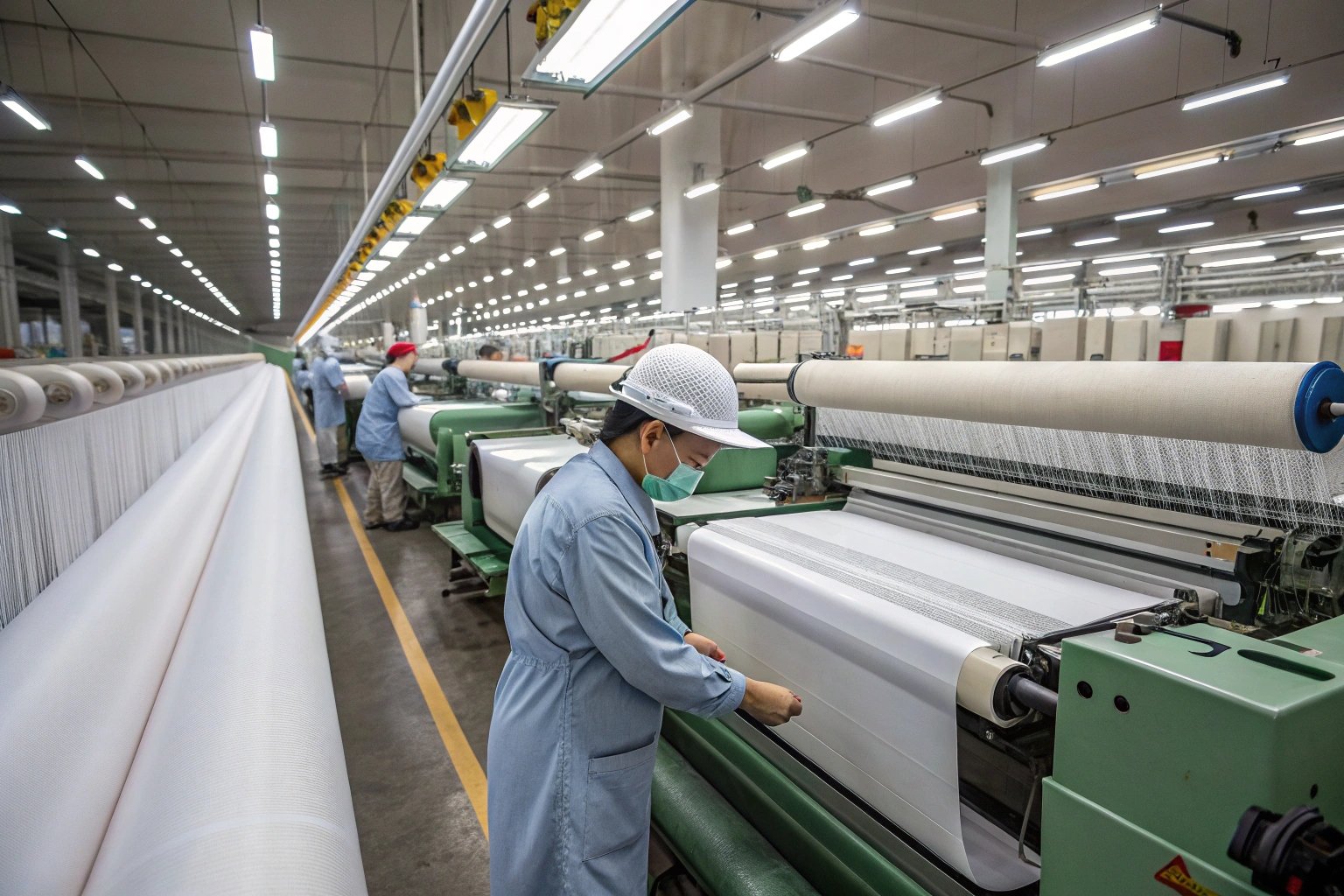When buyers like Ron seek uniformity across 10,000 meters of fabric, the weaving method becomes critical. Inconsistent tension, skipped threads, or uneven surface texture can lead to product rejects or brand damage. That’s why leading mills today, especially in China, are investing in one thing—air-jet looms.
Air-jet loom woven fabrics offer unmatched consistency in texture, density, and defect rate—making them ideal for buyers who demand reliability.
At Fumao, we run over 50 air-jet looms daily to serve fashion, sportswear, and home textile clients. Whether you’re producing shirts, lining, or performance fabric, choosing air-jet woven textiles means fewer variations, faster lead times, and higher buyer satisfaction.
If uniformity is your priority, then air-jet is your solution.
What Makes Air-Jet Looms More Precise Than Shuttle or Rapier?
Different looms, different results. For precision, air is king.
Air-jet looms insert weft yarn using high-speed compressed air, enabling smoother fabric surface, better tension control, and faster production.
Unlike shuttle looms that drag yarn mechanically or rapier looms that use metallic grippers, air-jet methods minimize yarn stress and create fewer mechanical contact points—translating into fewer thread breaks and tighter tolerances.
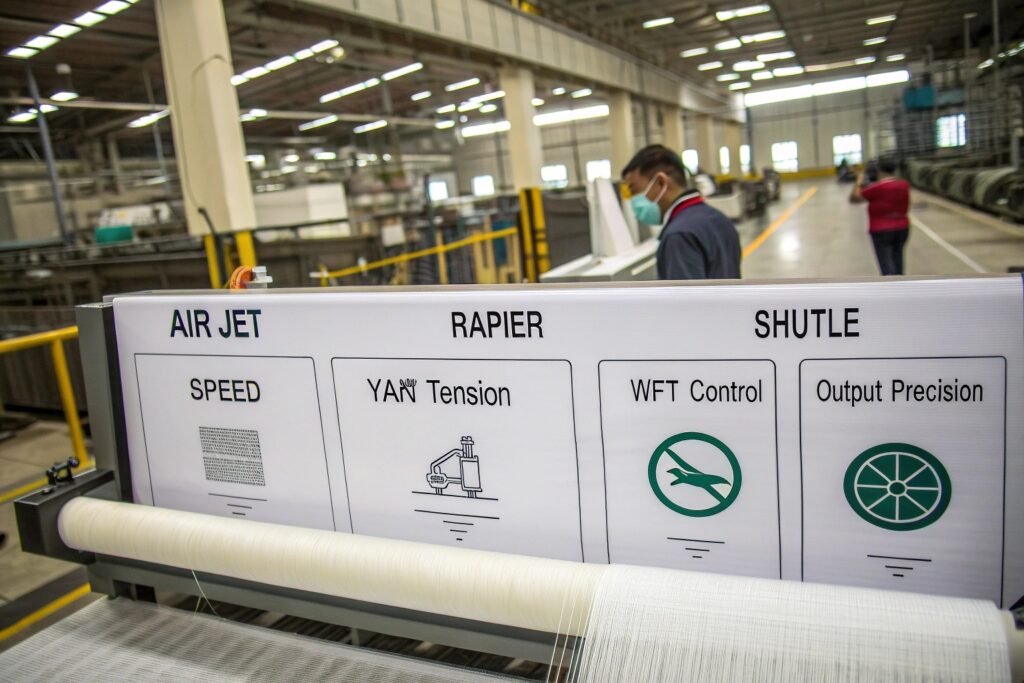
What Are the Main Technical Advantages?
| Feature | Air-Jet Loom | Rapier Loom | Shuttle Loom |
|---|---|---|---|
| Speed (picks/min) | 800–1200 | 400–600 | 150–250 |
| Yarn Stress | Minimal | Moderate | High |
| Consistency (width) | Excellent | Good | Fair |
| Maintenance Needs | Low | Medium | High |
Is Air-Jet Only for Lightweight Fabrics?
While ideal for cottons and polyesters under 300gsm, today’s air-jet looms can also handle medium-weight blends and high-density poplins. We fine-tune nozzle pressure and warp tension to adapt to different constructions.
How Does Air-Jet Weaving Improve Defect Rates?
In mass production, 2% defect rate vs 0.2% is the difference between profit and loss.
Air-jet looms drastically reduce weft skips, broken picks, and weft misalignment—leading to higher first-pass yield and consistent bolt-to-bolt quality.
Our defect logs show 80% fewer errors in air-jet compared to older shuttle systems. With sensors monitoring every yarn pass, faulty threads are detected and corrected in real time.
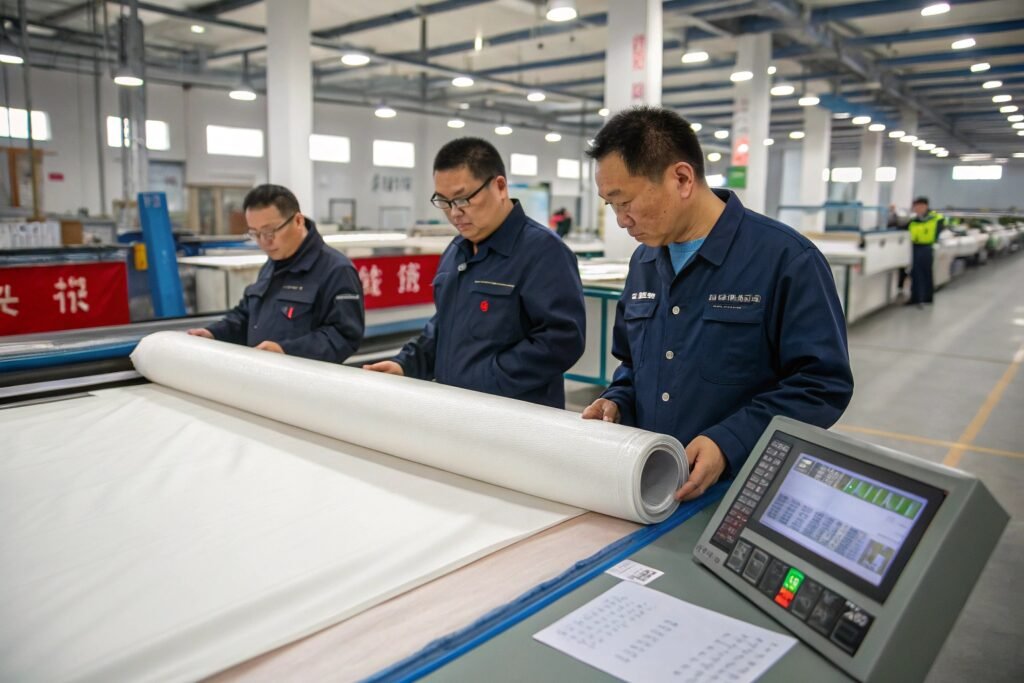
What Types of Defects Are Common in Other Looms?
- Weft skips: Uneven yarn entry causes visible stripes
- Warp tension shifts: Create wavy texture
- Edge curling or unclean selvedge: Affects sewing and alignment
Air-jet weaving stabilizes warp tension using digital rollers and reduces pick variation across large runs.
Is Consistency Trackable?
Yes. At Fumao, each roll is QR-coded and linked to weaving line data—so buyers can track defect logs, loom settings, and operator records for quality audits.
Why Do Global Buyers Prefer Air-Jet for Bulk Orders?
Scaling fabric orders isn’t just about volume—it’s about uniformity across that volume.
Air-jet looms deliver the consistency large brands need for smooth cutting, dyeing, and finishing across thousands of meters.
No surprises in shrinkage, color take-up, or texture. That’s why Zara, Uniqlo, and many EU-based sourcing houses specify air-jet weaving in their tech packs. At Fumao, we run bulk orders with in-line quality checkpoints and yield over 98% first-pass approval.
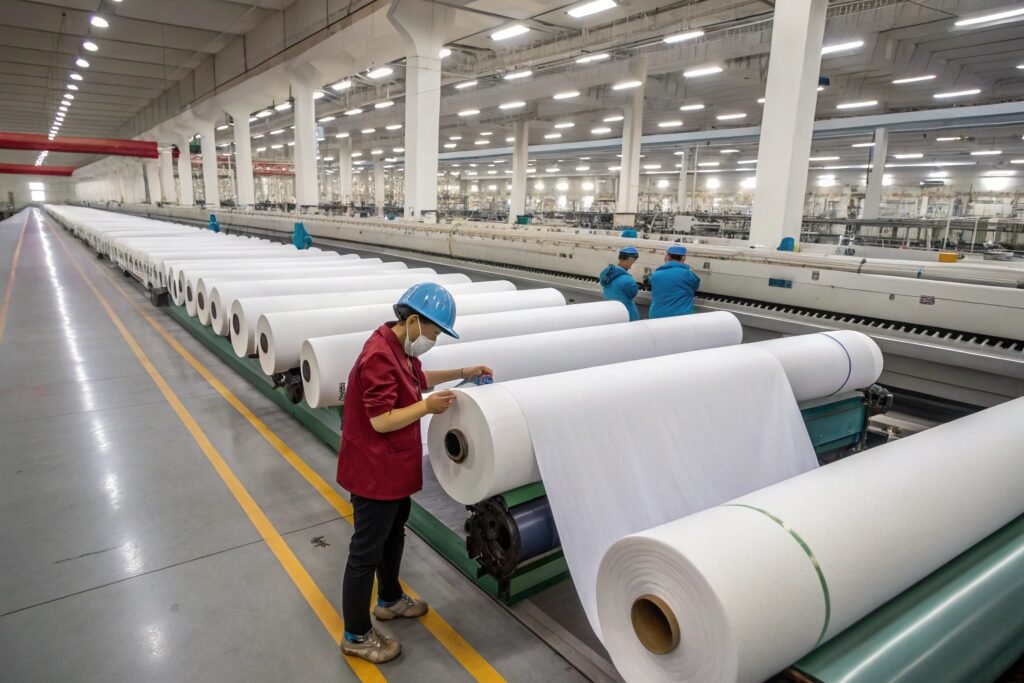
Does It Affect Dyeing Uniformity?
Absolutely. Uniform weave density means even dye penetration, less batch-to-batch variation, and higher colorfastness. This is key for brands that reorder seasonally or rely on standard shades.
What Fabrics Are Commonly Air-Jet Woven?
- Poplin & broadcloth
- Plain weave shirting
- Microfiber polyester
- Uniform fabrics
- Lining and sheeting
We stock over 3,000 designs woven on air-jet looms—ready for sampling or mass production.
Is Air-Jet Weaving More Cost-Effective Over Time?
Modern tech isn't just faster—it’s smarter financially too.
Though air-jet looms have higher upfront cost, they reduce production waste, energy use, and reprocessing labor—cutting overall cost per meter.
We’ve seen clients reduce order rejections by 50%, speeding up delivery and lowering per-unit fabric cost by 7–10%. That makes a big difference on large runs.
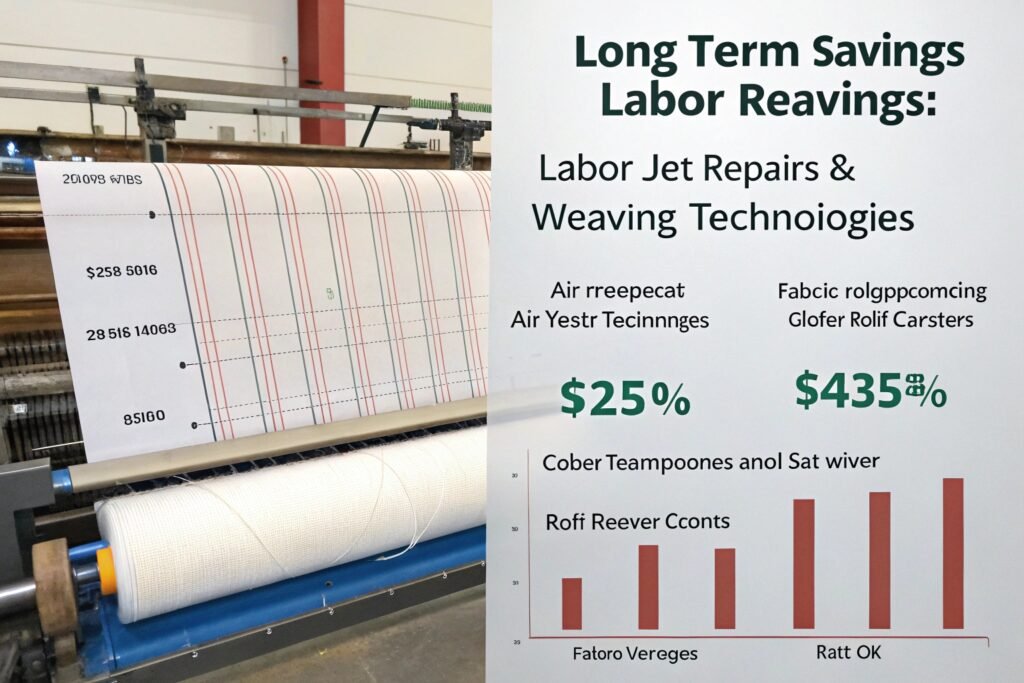
What Are the Hidden Cost Savings?
- Fewer rejected rolls
- Less fabric wastage due to flaws
- Lower labor hours for rewinding/repair
- Less energy due to faster throughput
For example, one client producing 20,000m poplin saved $3,800 in rework costs by switching to our air-jet line.
Is Air-Jet Weaving Energy Efficient?
Yes. Newer models feature inverter motors and auto-idle during loading. At Fumao, we monitor power draw and have seen up to 15% less energy per meter woven compared to rapier lines.
Conclusion
When you need consistent, reliable, high-speed woven fabric—air-jet technology is the solution. It delivers cleaner weaves, lower defect rates, better dye uniformity, and long-term cost efficiency. At Fumao, we’ve invested in air-jet looms because our buyers demand the best. And we deliver it—roll after roll. Whether you’re a large-scale buyer or scaling up, air-jet woven fabrics give you confidence, control, and commercial value that outdated weaving systems simply can’t match.

